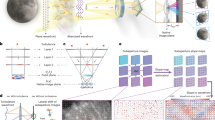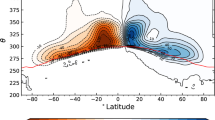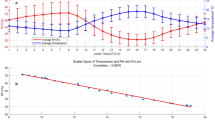Abstract
THE purpose of this note is to clear up some confusion which appears to exist concerning the average duration of atmospherics. Appleton, Watson Watt and Herd1, and also Cairns2 give times of the order of milliseconds for the duration of the atmospherics which they observed. On the other hand, observations which have been made in Australia using an ordinary tuned receiving set, and recording the motion of the string of an Einthoven galvanometer on moving photographic paper, have given durations ranging, in most cases, from 0.2 sec. to 0.5 sec., and occasionally longer. This is also the order of magnitude of duration which is deduced from listening to an ordinary broadcast receiver.
This is a preview of subscription content, access via your institution
Access options
Subscribe to this journal
Receive 51 print issues and online access
$199.00 per year
only $3.90 per issue
Buy this article
- Purchase on SpringerLink
- Instant access to full article PDF
Prices may be subject to local taxes which are calculated during checkout
Similar content being viewed by others
References
Proc. Roy. Soc., 111, 165, 654 ; 1926.
Proc. Inst. Rod. Eng., 15, 985 ; 1927.
Proc. Roy. Soc., A, 143, 654 ; 1934.
NATURE, 131, 765, May 27, 1933.
Phil. Mag., 15, 409 ; 1933.
Ann. Phys. u. Chem., 68, 776 ; 1899.
Author information
Authors and Affiliations
Rights and permissions
About this article
Cite this article
MUNRO, G., WEBSTER, H. Nature of Atmospherics. Nature 134, 880 (1934). https://doi.org/10.1038/134880b0
Published:
Issue date:
DOI: https://doi.org/10.1038/134880b0
This article is cited by
-
The Effect of Sunset on Atmospherics
Proceedings of the Indian Academy of Sciences - Section A (1941)
-
Nature of Atmospherics
Nature (1935)



